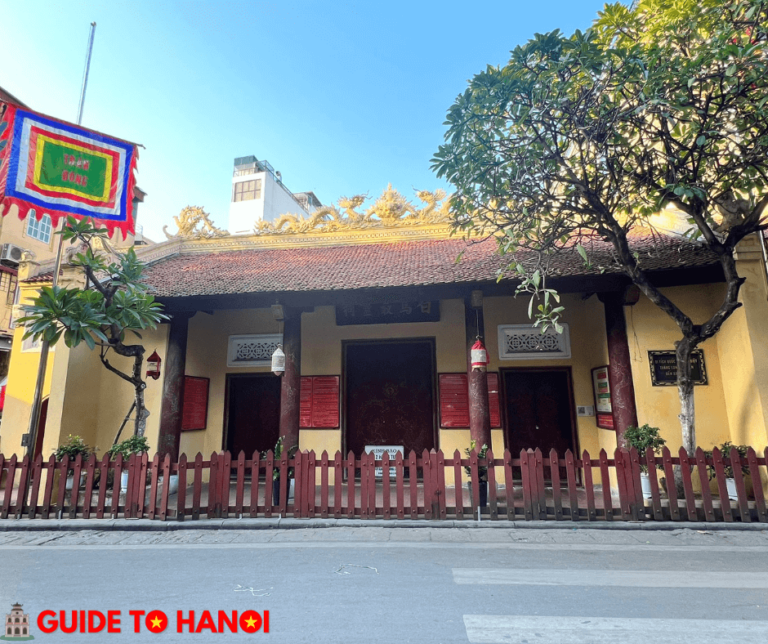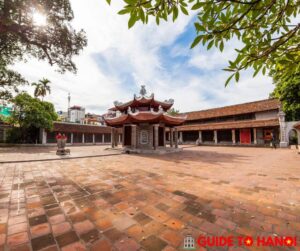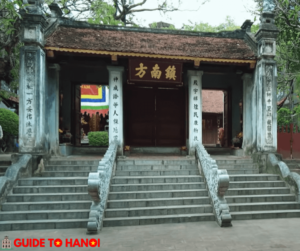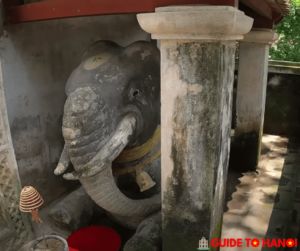Bach Ma Temple
In the bustling heart of Hanoi’s Old Quarter, near Mina Hotel & Spa, stands Bach Ma Temple, a charming ode to ancient Vietnamese heritage.
Its name, ‘White Horse Temple,’ hints at the legend behind its creation.
Built by Emperor Ly Thai To in the 11th century, the temple honors a white horse that led the emperor to choose this spot for his city walls.
A Journey Through Time
Step through the temple’s ancient wooden doors to encounter a statue of the legendary white horse and a stunning red-lacquered funeral palanquin.
The Origins of Bach Ma Temple
Bach Ma Temple was initially constructed in the 9th century to worship Long Do, the original deity of ancient Hanoi.
It holds a pivotal place in history, as it was here that Dinh Bo Linh held a ceremony in the 10th century to pray for divine blessings before embarking on a successful military campaign.
Royal Recognition and Renovation
Over the centuries, Bach Ma Temple has undergone several renovations, most notably during the Chinh Hoa era under Le Hy Tong’s reign.
In 1839, further renovations were made, adding a shrine to Confucius and expanding the temple’s landscape.
Architectural Marvels
The temple’s architecture reflects the Nguyen Dynasty’s style, featuring a wooden frame with ironwood columns and intricate decorations.
The Phuong Dinh house, known for its “crab shell dome” structure, is a festival highlight.
The Sacred Interior
Visitors can admire ancient relics such as stone steles, ordination items, and gongs inside the temple.
The interior pavilion houses altars dedicated to Te Vuong Phi and Be Nui, offering a glimpse into ancient Vietnamese spiritual practices.
Preserving History
Today, Bach Ma Temple is a testament to Hanoi’s rich cultural heritage, preserving valuable relics and serving as a source of historical knowledge.
With over a thousand years of history, it remains a must-visit for travelers seeking to delve into Vietnam’s past.
Visit Bach Ma Temple Today!
Experience the allure of ancient Vietnam at Bach Ma Temple. Witness history comes alive as you explore its sacred grounds and architectural marvels.
Take advantage of this opportunity to immerse yourself in the rich tapestry of Hanoi’s past.
Plan your visit to Bach Ma Temple and discover the essence of East Thang Long!

| Bach Ma Temple Summary | |
|---|---|
| Location | 76 Hang Buom Street, Hang Buom Ward, Hoan Kiem District, Hanoi |
| Origin | 9th century, built to worship Long Do, the deity of ancient Hanoi |
| Significance | Oldest temple in Hanoi, part of the Thang Long citadel, honored by various kings and dynasties |
| Legend | Built by Emperor Ly Thai To to honor a white horse that led him to this site for city wall construction |
| Architecture | Reflects Nguyen Dynasty style, with wooden frame, ironwood columns, and intricate decorations |
| Renovations | Major renovations in the Chinh Hoa era and 1839, expanding the temple’s landscape and adding a Confucius shrine |
| Current State | It preserves valuable ancient relics such as stone steles, ordination items, and a pair of gongs. |
What is the oldest building in Hanoi?
Bach Ma Temple is considered the oldest building in Hanoi.
It was built in the 9th century and has stood as a symbol of the city’s rich history for over a thousand years.
What is the oldest temple in Hanoi?
Trấn Quốc Pagoda is one of the oldest temples in Hanoi, dating back to the 6th century during the reign of Emperor Ly Nam De.
It is renowned for its historical and architectural significance, making it a must-visit for travelers exploring Hanoi’s cultural heritage.
Address:
- 76 P. Hàng Buồm, Hàng Buồm, Hoàn Kiếm, Hà Nội
Opening Hours:
- Daily: 9:00–17:30
Entrance Fee:
- Free




